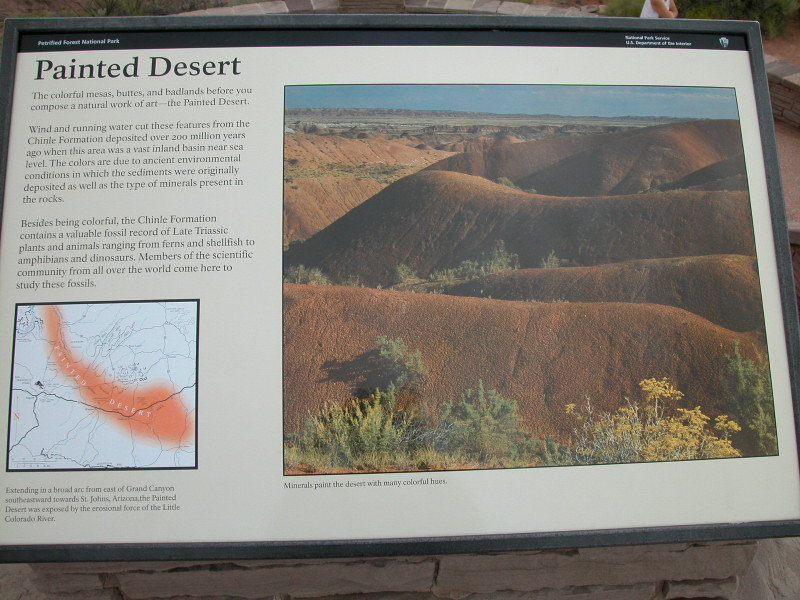Inside Painted Desert Inn
Inside Painted Desert Inn
Inside Painted Desert Inn
OutsidePainted Desert Inn
Petrified log in Jasper Forest.
A big green-collared lizard !
A petrified log along the trail.
"Tawa" means "sun" in Hopi.
Originally a two-story inn overlooking the Painted Desert, it operated as a tourist attraction for almost 12 years. After the National Park Service bought the inn in 1936, the CCC constructed a new building according to architect Bennett's design.
"Skylights" stained glass ceiling
Back door. showing the use of petrified wood in the construction of the house.
Centuries of scouring floodwaters washed out the gully beneath this 110-foot (34 m) petrified log to form Agate Bridge. The stone log, harder than the sandstone around it, resisted erosion and remained suspended as the softer rock beneath it washed away.
About 225 million years ago, a floodplain existed here, littered with fallen trees. Periodic flooding buried the logs beneath layers of silt. Over time, silica-laden waters filtered through these deposits and petrified the wood by encasing the trees' organic material with minerals.
Iron oxides give petrified wood its distinctive red, yellow and orange hues; manganese oxides produce blues, purples and deep blacks, while the original carbon produces the shade of gray.
Agate House is a partial reconstruction of an Indian pueblo built here almost 10 centuries ago : Indians built dwelling walls like these of petrified wood sealed with mud mortar. Archaeologists believe the original eight-room pueblo was built between A.D 1050 and 1300.
Could today's woodlands become petrified forests of tomorrow ? Geological forces similar to those of the Triassic Period still shape the Earth's surface, and may create the preliminary conditions for future petrification...



















